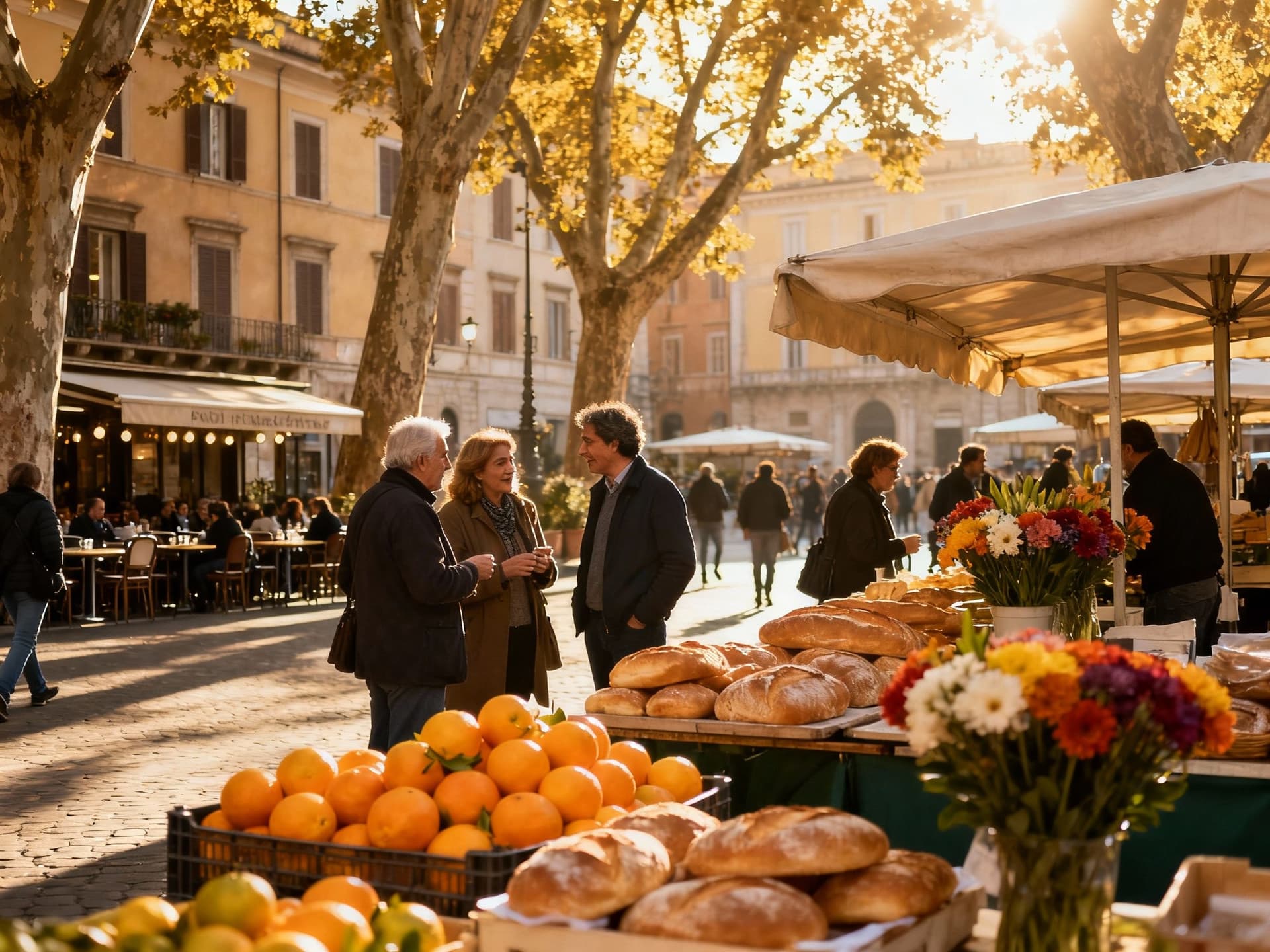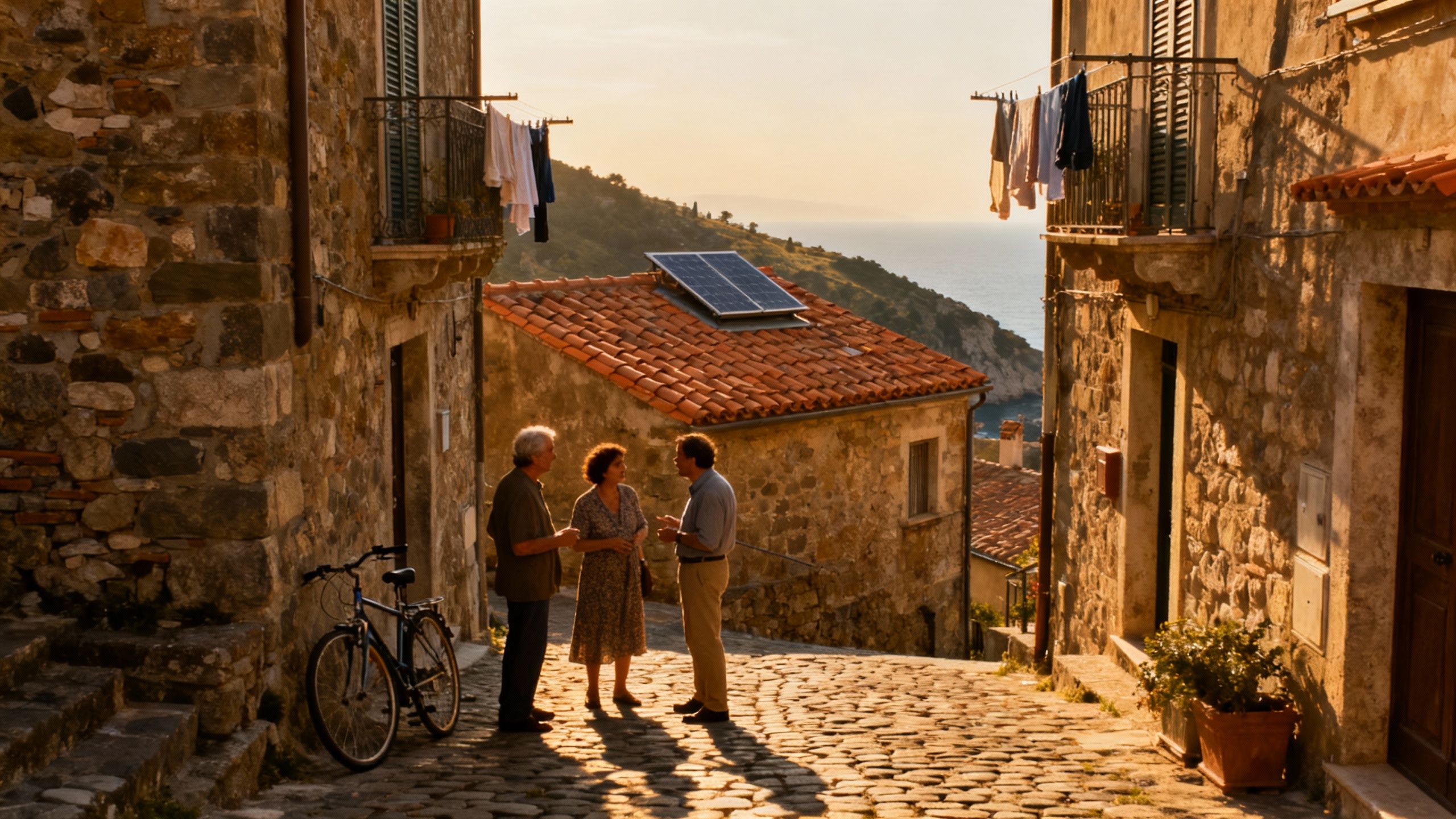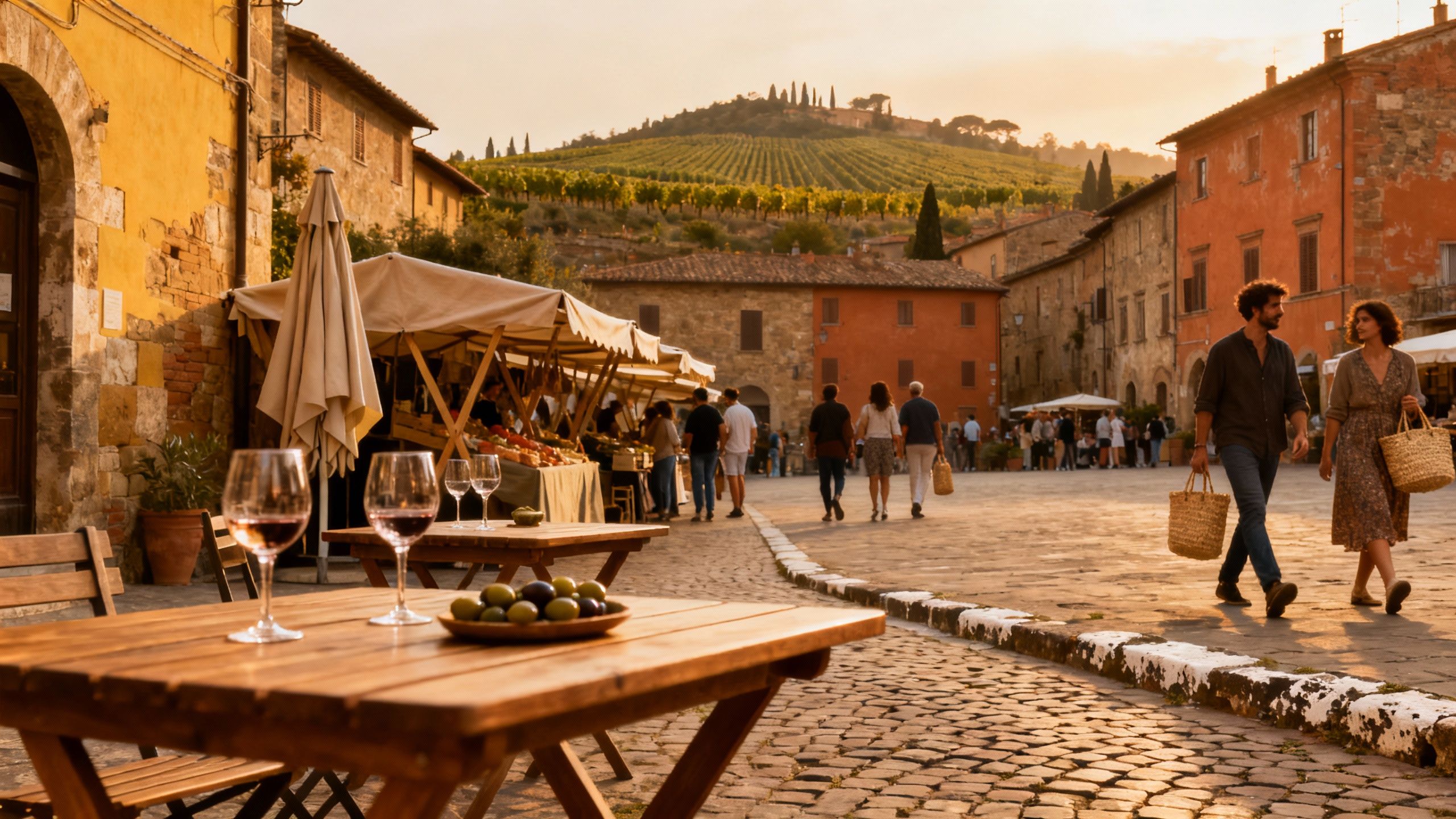Italy’s Green Grid: Where Home and Renewables Meet
Italy’s renewables boom is changing how homes live — marry seasonal Italian life with local green infrastructure to buy smarter and steward well.
Imagine waking to the warm scent of espresso and potted herbs on a sunlit terrace in Puglia, while the rooftop panels hum quietly and the local grid feeds excess solar back into the village. Italy’s landscape—olive groves, coastal pines, hilltop villages—feels timeless, yet beneath those cobbled streets a quiet revolution is reshaping how homes are powered, cooled and stewarded. For buyers wanting both a life woven with seasons and a home that treads lightly, Italy’s accelerating green infrastructure is the terrain where lifestyle and practicality meet.
Living the Italian life — Sunlight, seasons and sustainable rhythms

Days in Italy begin in ordinary, sensory pleasures: morning markets in Mercato Centrale, a bicycle ride along the Lungomare in Bari, an aperitivo beneath plane trees in Trastevere. These rhythms shape what a home needs — shady courtyards for summer siestas, thick stone walls that temper winter, and outdoor kitchens to celebrate harvests. Locally minded buyers discover that green features — from passive shading to photovoltaic tiles — don’t feel technical here; they feel part of living well.
Neighborhood spotlight: Trastevere, Val d'Orcia, and the Amalfi hinterland
Trastevere offers narrow lanes, neighborhood markets and a cafe culture that rewards small terraces. In the Val d’Orcia, stone farmhouses sit amid wheat and vines; owners prize rainwater capture, thermal mass and local stone repairs. The Amalfi hinterland—Ravello’s lemon terraces and Atrani’s micro-communities—shows how hillside homes use gravity-fed water systems and micro-solar to stay resilient. Each place expresses sustainability through materials and daily habits more than through glossy certifications.
Food, markets and micro-seasons: why lifestyle shapes property value
Seasonal life—truffle hunts in Umbria, citrus harvests on Sicily’s slopes, beach culture on Liguria’s pebbled coves—draws people and keeps neighbourhoods lively year-round. The recent expansion of renewables across Italy (Terna reports added capacity and stronger domestic generation) supports this rural resilience: villages with local solar or shared storage can keep lights on during tourist lulls and reduce peak charges, which in turn sustains local commerce and rental appeal.
- Lifestyle highlights to seek when visiting properties
- Morning market rituals — Mercato Centrale (Florence), Campo de' Fiori (Rome)
- Community food traditions — small trattorie near Piazza del Popolo or Piazza del Duomo
- Seasonal experiences — truffle fairs in Norcia, citrus festivals in Amalfi
- Everyday green practices — rooftop and balcony solar, rainwater barrels, communal gardens
Making the move: how Italy’s green infrastructure affects buying decisions

Buying in Italy now is about reading two maps at once: the cultural map of neighborhoods and the practical map of energy resilience. National and regional investments have pushed renewable capacity to new highs (Terna and industry summaries note record renewable shares in 2024), but local permitting, grid connection points and storage availability vary widely. That variance directly influences utility costs, renovation viability and long-term comfort.
Property styles and what they mean for green living
Stone farmhouses excel at passive regulation but often need modern interventions for efficient heating and cooling. Historic apartments in Siena or Milan require sensitive retrofits — insulation, smart glazing, and discreet PV solutions — to preserve character while lowering bills. Newer builds near Milan or in parts of Puglia may already include heat pumps, PV and EV chargers. Ask how a property’s fabric interacts with renewable tech before dreaming of zero‑bill living.
Working with local experts who know the green terrain
A local agent who understands communal water rights, heritage restrictions and grid connection queues is priceless. Look for agents or builders with proven experience installing rooftop PV in heritage zones, arranging micro-storage, and securing local permits. They’ll know where local councils have fast-track renewable plans and where bureaucracy still slows projects — a small difference that can mean months (and tens of thousands of euros) in cost.
- Steps to marry lifestyle and green practicality when making an offer
- Visit at different seasons — check summer shade, winter damp, and how the house performs.
- Request recent energy bills and any grid connection documents; compare with local average tariffs.
- Ask for a site plan showing roof orientation, shading, and space for panels or a small battery.
- Work with a local architect or engineer familiar with heritage retrofits and green incentives.
Insider knowledge: what expats wish they’d known
Expats often arrive enchanted by piazzas and provincial calm, then run into practical surprises: slow municipal processes for solar permissions, seasonal water shortages in the south, or unexplained delays connecting to local grids. Those hiccups aren’t fatal; they become manageable when you start with local intelligence. Communities that host cooperatively owned solar or battery gardens often provide faster access than lone homeowners pushing permits through.
Cultural integration: language, community and daily life
Simple acts — learning the rhythm of weekly markets, joining a village volunteer group that tends olive groves, or bringing pastries to the barista you favour — open doors. If you want to adopt low-impact living, neighbors are often your best allies: they’ll share trusted installers, warn about council quirks, and teach you the small rituals that make a garden thrive or a cistern perform through drought.
Long-term stewardship: how life changes after you buy
Owning in Italy often shifts you from guest to custodian. You’ll find yourself planting hedges to reduce erosion, choosing lime-based plaster over acrylics, and negotiating community solar shares. These acts protect value and deepen satisfaction. With Italy’s renewables growing rapidly, owners who engage in stewardship not only reduce costs but help strengthen the local energy fabric.
- Red flags to watch for before bidding
- No recent energy bills or unclear meter setup — ask for 24 months of data.
- Heritage restrictions not disclosed — check soprintendenza rules if the property is listed.
- Roof orientation and shading make solar plans unviable without creative solutions.
- Local grid saturated — ask the agent about recent connection timelines.
Conclusion: Italy invites you to a life measured in meals, market rhythms and seasonal gardens — and increasingly powered by local green systems. If you want a home that breathes with the landscape, pair that longing with practical questions about grid access, heritage constraints and roof potential. Start with local experts who understand both the village piazza and the nearest grid node; they’ll help you turn an Italian daydream into a sustainably lived reality.
Danish relocation specialist who moved from Copenhagen to the Algarve; supports families with seamless transitions, local partnerships, and mindful purchases.


